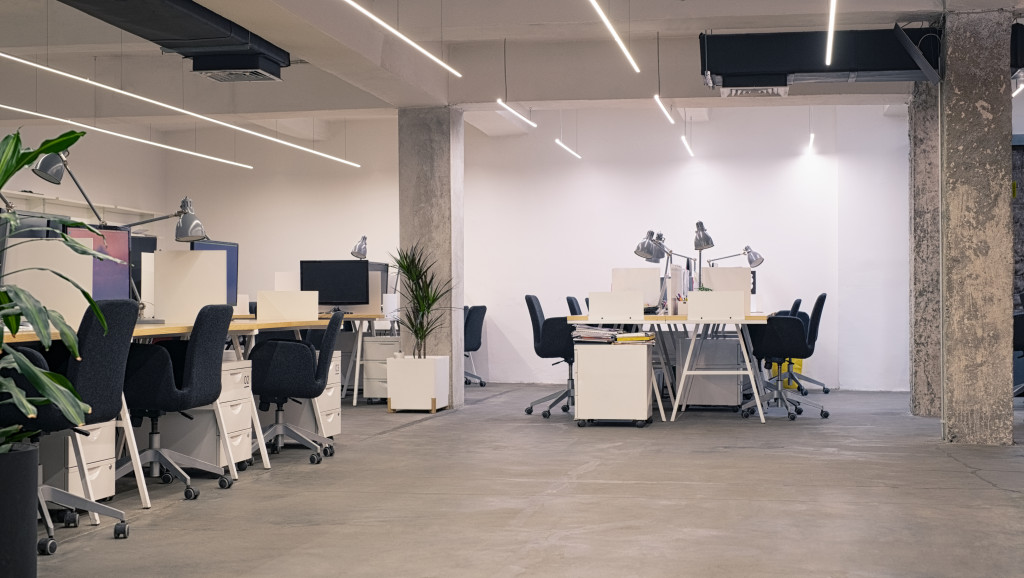- Incorporating technology into office design is vital to understand business needs and prioritize relevant tools.
- Assess space requirements for technology and consider its role in fostering collaborative environments.
- Prioritize electrical installation to support technological needs, including modern lighting for a pleasant atmosphere.
- Foster collaboration by designing co-working spaces, lounges, and open floor plans equipped with appropriate tech tools.
In the world of business, it’s no secret that technology has become incredibly important. From communication to productivity, there are countless ways that companies can use technology to their advantage. And one of the most critical places to incorporate technology is in your office design. Whether you’re moving into a brand new space or redesigning your current one, it’s vital to make technology a focus. This blog post will dive into the importance of incorporating technology into your new office design and how to do it effectively.
Understand Your Business Needs
Before you start incorporating technology into your new office design, it’s essential to understand your business needs. Think about the day-to-day operations of your company and what technology could help streamline them. For example, if you have a lot of remote employees, having a solid video conferencing system could be incredibly helpful. Here are the matters to take into account:
What technologies are important for you and your team?
Identifying the types of technology that are important for you and your team is key when designing a tech-friendly office. Perhaps collaboration tools like interactive whiteboards, project management software, or cloud-based platforms are essential for your everyday tasks. Maybe your team would hugely benefit from high-speed internet connections and advanced video conferencing systems, especially if you have remote employees.
How much space do you need to accommodate the technology?
Assessing the spatial requirements for your chosen technological setups is another critical step in the process. You need to ensure there’s enough room to accommodate everything from servers to smart boards without creating a cluttered and disorganized workspace. It’s crucial to strike a balance between integrating the necessary technology and maintaining an open, breathable working environment.
How will the technology be used in a collaborative environment?
Considering technology’s role in fostering collaboration is a crucial part of office design. Assess how various technological tools and platforms will be used to encourage teamwork and cooperation among staff. For instance, shared digital workspaces and video conferencing systems can connect remote and in-house employees, fostering a unified team. Similarly, interactive digital boards and projectors can serve to enhance meetings and brainstorming sessions, making the exchange of ideas more dynamic and engaging.

Prioritize Electrical Installation
When planning your office design, it’s essential to prioritize electrical installation, as it lays the groundwork for all your technological needs. This includes everything from ensuring an adequate number of outlets to planning for proper data cabling.
To achieve this, partnering with a reliable industrial electrical company is paramount. They can help design and implement an electrical system that not only meets your current technological requirements but also anticipates future needs, thereby creating a robust, scalable, and flexible office environment.
Furthermore, when considering the electrical installation, don’t forget to think about lighting, too. Incorporating modern LED lighting into your office design can help you save energy and create a more pleasant atmosphere for employees.

Focus on Collaborative Spaces
In the modern era, collaboration is critical. Your office design should reflect this by creating spaces for employees to work together in a collaborative environment. This might mean having large conference rooms with video screens for sharing ideas or making areas with comfortable seating where employees can brainstorm together. These communal spaces can help foster creativity and help your team work more effectively together. Here are other examples:
Co-Working Spaces
Co-working spaces are becoming increasingly popular in corporate environments. These areas can be used for both individual and group work, providing employees with the flexibility to choose their own working environment. To make these even more effective, you might want to consider incorporating tools like digital whiteboards or projectors that can help facilitate better collaboration between team members.
Common Lounges
Common lounges can also be incredibly useful when it comes to fostering collaboration among employees. These areas should have comfortable seating, tables, and other amenities that make it easy for team members to take breaks from work and brainstorm together in an informal setting.
Open Floor Plans
Open floor plans are also great for facilitating collaboration. These types of office designs break down the traditional cubicle walls, allowing employees to quickly move around and interact with each other without any barriers. Furthermore, they can help foster an atmosphere of transparency and trust among staff members while encouraging them to collaborate more often.
Incorporating technology into your new office design is crucial in the modern era. By understanding your business needs, prioritizing connectivity, embracing cutting-edge technology, focusing on collaborative spaces, and allowing for flexibility, you’ll be better equipped to create a space that meets the needs of your employees and helps your business succeed. So, as you’re designing your new space, take the time to think carefully about how technology can help you achieve your goals. It’s an investment that’s sure to pay off in the long run.
